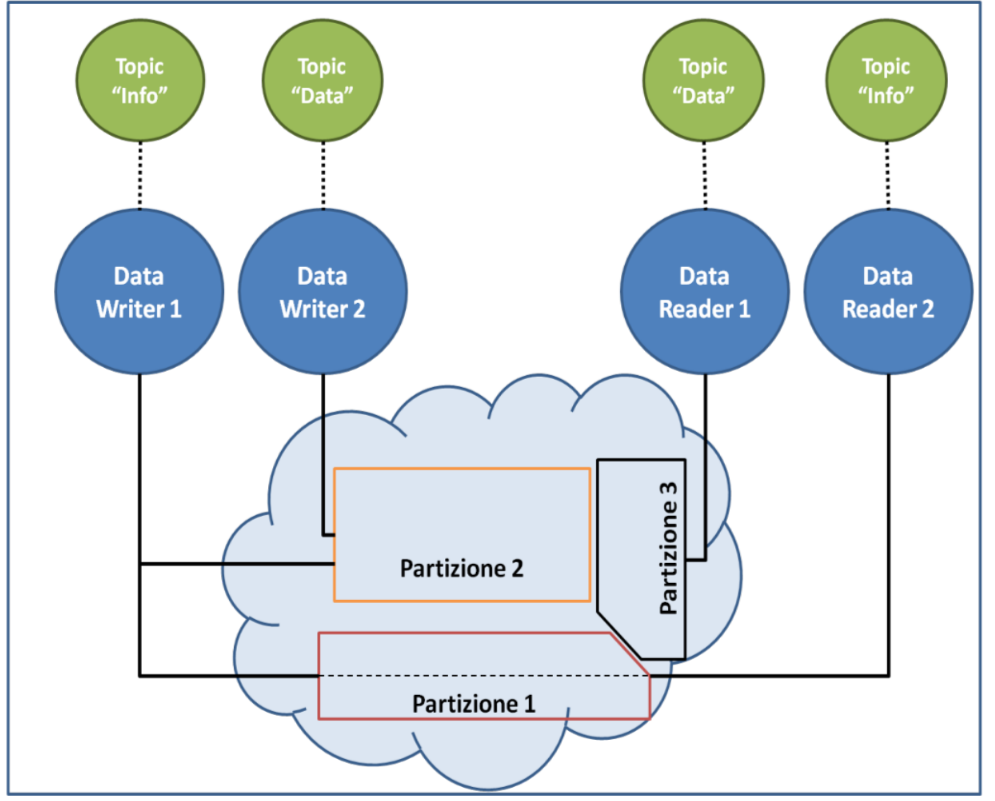EVENTS
Events can be defined as temporary constrained massages that needs to be processed as quickly as possible
EVENTS VS MESSAGES
In a mobile environment events and messages show the same characteristics and can be handled by similar systems
Follow this idea events can be seen as messages with some content in a sub model where publisher are the nodes where the event is generated and subscribers are the nodes that are interested to the specific event
All consideration for messages are valid also for events, some specific events question can be:
- Anonymous communication
- Possibility to use filters (on headers or entire messages)
- Different topologies for routing and different semantics associated to event sending/notification
- non-blocking operations (polling, callback)
GENERAL ARCHITECTURE OF A EVENT SYSTEM
An event system is based on a central sub service to achieve decoupling of the publisher and subscribers
flowchart LR subgraph event_system direction LR subgraph pub_sub_service direction TB A[notification consumer] B[notification engine] C[subscription manager] C --> B --notify--> A end subgraph nodes direction TB D[publisher] E[subscriber] D ~~~ E end end D --emits--> pub_sub_service E --subscribe request response--> pub_sub_service
EVENT ROUTER
Entity that implements the sub service, the router achieves decoupling, implement filters trough the use of routing tables and other QoS functionalities (delivery with deadlines,fault-tollerance,ordering )
Possible topologies can be:
- centralized
- hierarchical
- cyclic acyclic
- based on rendezvous points
ROUTING POLICIES
- simple routing every broker has the same routing table
- covering-based routing only the more general subscription are routed, exploiting the fact that general subscription are supersets of more specific ones
- merging based routing merging the different rows of the routing tables in order to reduce the exchange of data between routers, it can be used in tandem with covering-based routing
The more sophisticated routing strategies show problems in the un-subscription phase and force the routing table to take tracks of which subscription an entry is done for
MESSAGE ROUTING FILTERS
Filters can be implemented at different levels:
- Channel/topic-based depending on the channel
- Subject-based depending on event subject
- Header-based depending on a set of fields. (For example, SOAP supports header-based routing for its messages)
- Content-based possibly depending on the whole message content. Higher expressive power, higher costs
JAVA EVENTS
Java implements a solution for event based distribution based on RMI (e.g. apache river (jini)) where a remote event listener notifies registered consumers with a remote object:
package net.jini.core.event;
public class RemoteEvent {
public long getID();
public long getSequenceNumber();
public java.rmi.MarshalledObject getRegistrationObject();
}there is also a lease mechanism and the possibility to define adapters to implement QoS and filters (no already given implementation)
OMG DISTRIBUTED DATA SERVICE (DDS)
OMG specification for data distribution service designed for real-time systems. The system is designed for sub oriented communications where the data space is accessed trough a middleware that offers general API. Content filtering and QoS negotiation are supported
PARTITIONS
Partitions are namespaces to allow the logical splitting of a DDS domain where publisher/subscribers can decide at runtime on which partitions to publish/subscribe data.
For a reader to receive data there is the need to share the same topic and partition as the source, partition can also enforce a QoS policy

RELIABILITY
Possibility to enforce policy on message delivery
- BEST_EFFORT NOT guaranteed that all messages are received, NOT guaranteed delivery order
- RELIABLE – guranteed that all messages are received and delivery order. Via Publishers that re-send data to Subscribers if needed and via Subscribers that send reception feedback (ack)
DURABILITY
Three possible specification for message storing
- volatile message are not stored
- transient message are stored in central memory
- persistent message are stored in persistent memory
GENERAL EVENT NOTIFICATION ARCHITECTURE (GENA)
Primary used solution in UPnP, for event notification, control nodes subscribe to events trough a SOAP http request and receive unicast notification
NOTIFY delivery path HTTP/1.1
HOST: delivery host:delivery port
CONTENT-TYPE: text/xml
NT: upnp:event
NTS: upnp:propchange
SID: uuid:subscription-UUID
SEQ: event key
<e:propertyset xmlns:e="urn:schemas-upnp-org:event-1-0">
<e:property>
<variableName>new value</variableName>
</e:property>
Other (possible) names of variable and associated values
</e:propertyset>